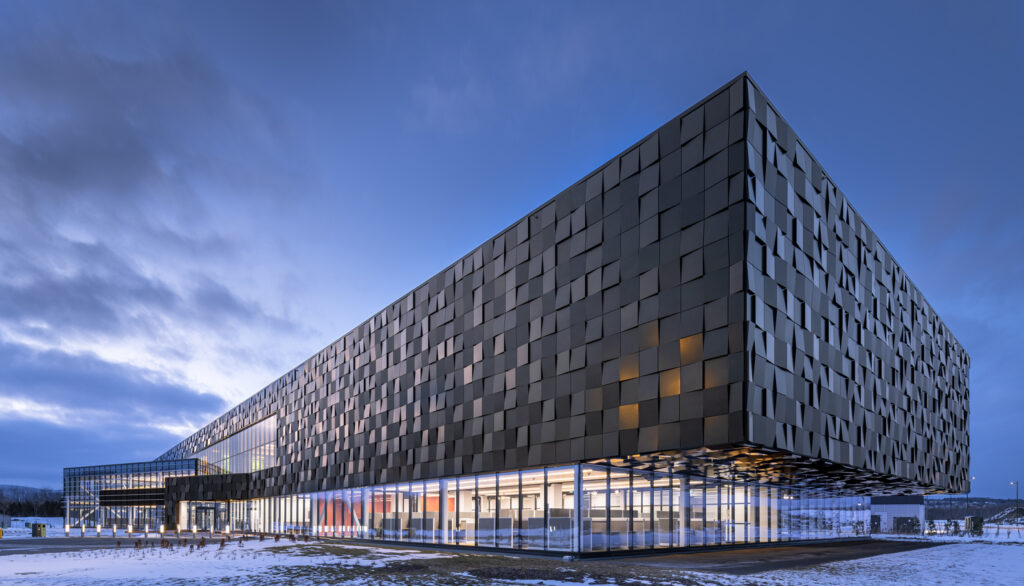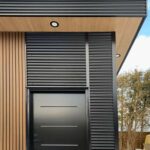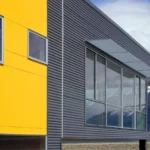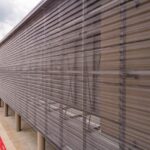In the world of architecture, innovation is a driving force that constantly pushes the boundaries of what’s possible. One area where innovation has been particularly transformative is in the use of architectural panels. These versatile building materials have evolved beyond traditional applications to become integral elements in cutting-edge architectural design. In this exploration of innovative panel applications in architecture, we’ll delve into the creative and functional ways architects are harnessing the potential of panels to shape the future of building design.
The Evolution of Architectural Panels
To understand the innovation taking place in panel applications, it’s essential to appreciate the evolution of these materials. Architectural panels, once primarily used for cladding and facades, have expanded their roles to encompass a wide range of functions:
1. Cladding and Facades: Panels continue to be a popular choice for cladding exteriors due to their durability and aesthetic appeal. However, innovations in materials and installation techniques have elevated the possibilities for creative facades.
2. Interior Design: Panels have transitioned from exterior applications to interior spaces. They are now used for wall coverings, ceiling treatments, and room dividers, providing both functionality and style.
3. Sustainability: Sustainable design is a growing focus in architecture, and panels are playing a significant role. Solar panels integrated into building exteriors generate renewable energy, while green facades with living plants enhance energy efficiency and aesthetics.
4. Smart Buildings: Panels are becoming intelligent components of smart buildings. They can incorporate technology for climate control, lighting, and interactive displays, contributing to enhanced building performance and user experience.
Innovative Panel Applications
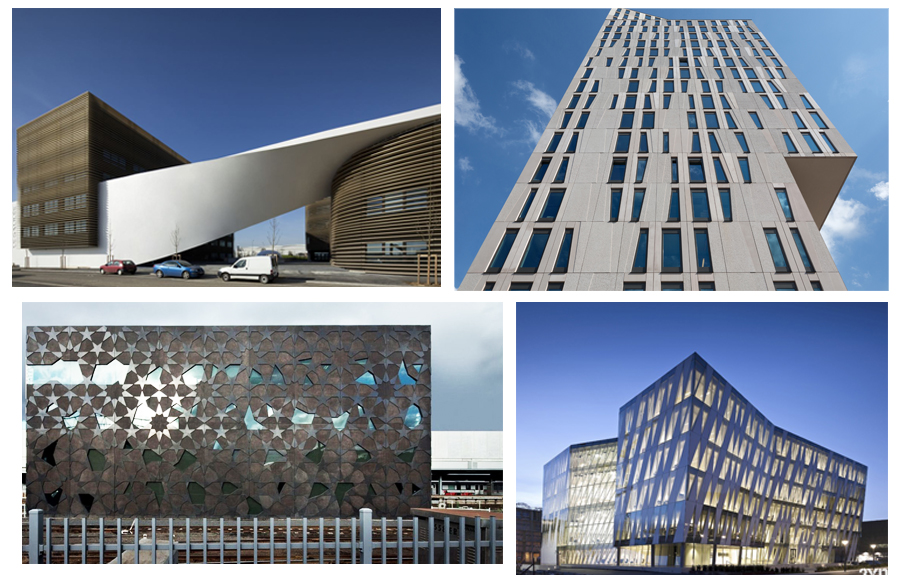
Let’s explore some of the most exciting and innovative panel applications in contemporary architecture:
1. Dynamic Facades: Architects are increasingly incorporating kinetic elements into facades using dynamic panels that respond to environmental conditions. These panels can adjust to optimize natural light, shade, and ventilation, enhancing energy efficiency and user comfort.
2. Photovoltaic Panels: Solar panels are no longer bulky appendages on roofs; they are integrated into building facades and windows, harnessing solar energy while maintaining aesthetics.
3. Bio-Integrated Panels: Panels with living plants, known as green facades or bio-integrated systems, are transforming buildings into urban ecosystems. They improve air quality, reduce heat island effects, and contribute to biodiversity in urban environments.
4. Acoustic Panels: Innovative acoustic panels are designed not only to absorb sound but also to serve as design elements. They can feature customizable patterns, colors, and shapes to enhance aesthetics while reducing noise.
5. Transparent Panels: Transparent panels with advanced materials like electrochromic glass can change transparency levels at the touch of a button, offering privacy, shade, and dynamic views.
6. Interactive Panels: Panels equipped with touchscreens and interactive technology are revolutionizing user experiences in public spaces, museums, and educational institutions.
7. 3D-Printed Panels: 3D printing technology enables the creation of intricate and customized panel designs that were once impossible to achieve. These panels can be both structural and decorative.
Challenges and Considerations
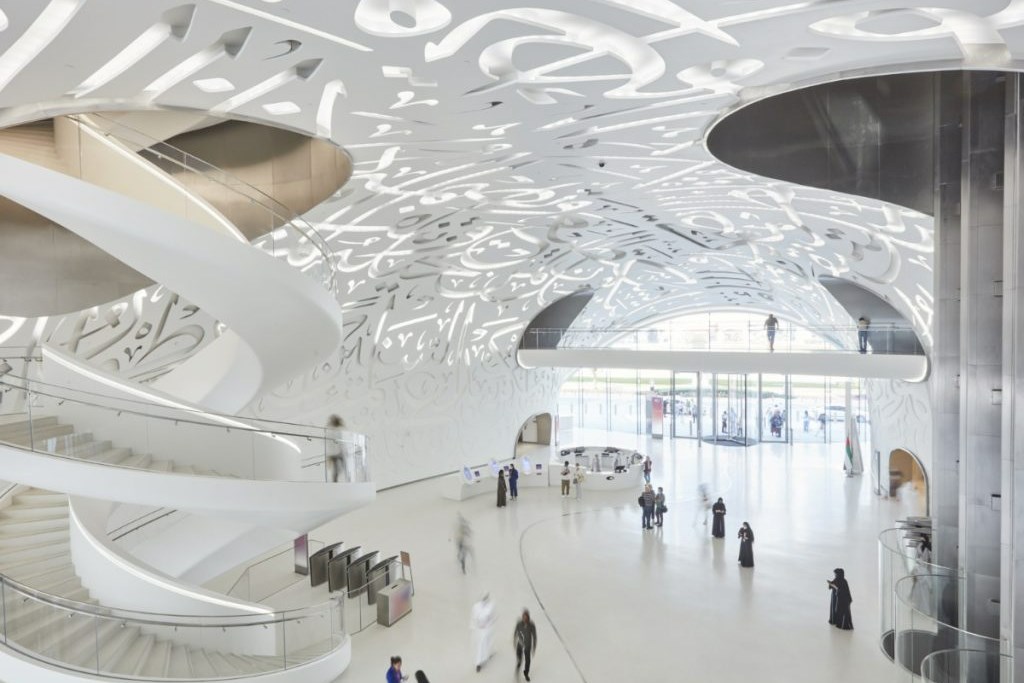
While innovative panel applications offer exciting possibilities, they also present challenges:
1. Cost: Cutting-edge materials and technologies can be expensive, impacting project budgets.
2. Maintenance: Some innovative panels require specialized maintenance to ensure functionality and longevity.
3. Integration: Integrating technology and complex systems into panels demands coordination among architects, engineers, and manufacturers.
4. Environmental Impact: Sustainability considerations are crucial, especially when incorporating technology or living elements into panels.
1. What are architectural panels, and how have they evolved in modern architecture?
Architectural panels are versatile building materials that have evolved from traditional cladding to encompass various functions, including sustainable design, smart building technology, and dynamic facades.
2. What are dynamic facades, and how do they work in architecture?
Dynamic facades are designed to respond to environmental conditions, adjusting to optimize natural light, shade, and ventilation. They enhance energy efficiency and user comfort by adapting to changing conditions.
3. How are photovoltaic panels integrated into building facades and windows?
Photovoltaic panels are integrated into building exteriors and windows to generate renewable solar energy while maintaining architectural aesthetics. They capture sunlight and convert it into electricity.
4. What are green facades or bio-integrated systems in architecture?
Green facades incorporate living plants into building exteriors, improving air quality, reducing heat island effects, and contributing to urban biodiversity. They create a connection between architecture and nature.
5. What is the role of acoustic panels in modern architecture, and how are they designed for aesthetics and functionality?
Acoustic panels not only absorb sound but also serve as design elements. They can feature customizable patterns, colors, and shapes to enhance aesthetics while reducing noise in interior spaces.
Innovative panel applications are reshaping the landscape of architectural design. From dynamic facades that adapt to the environment to panels that generate renewable energy and improve indoor air quality, these materials are more than just building skins; they are functional, sustainable, and interactive elements. Architects and designers are continually pushing the boundaries of what can be achieved with panels, paving the way for a more innovative, sustainable, and aesthetically pleasing future in architecture. As technology advances and materials evolve, the possibilities for panel applications are limited only by our creativity and imagination.

